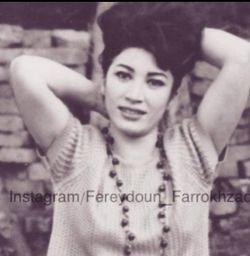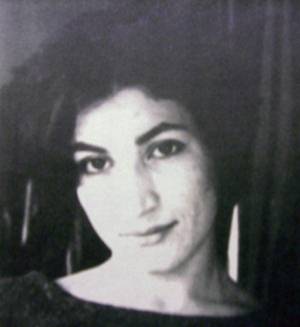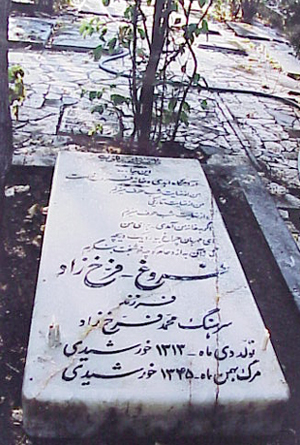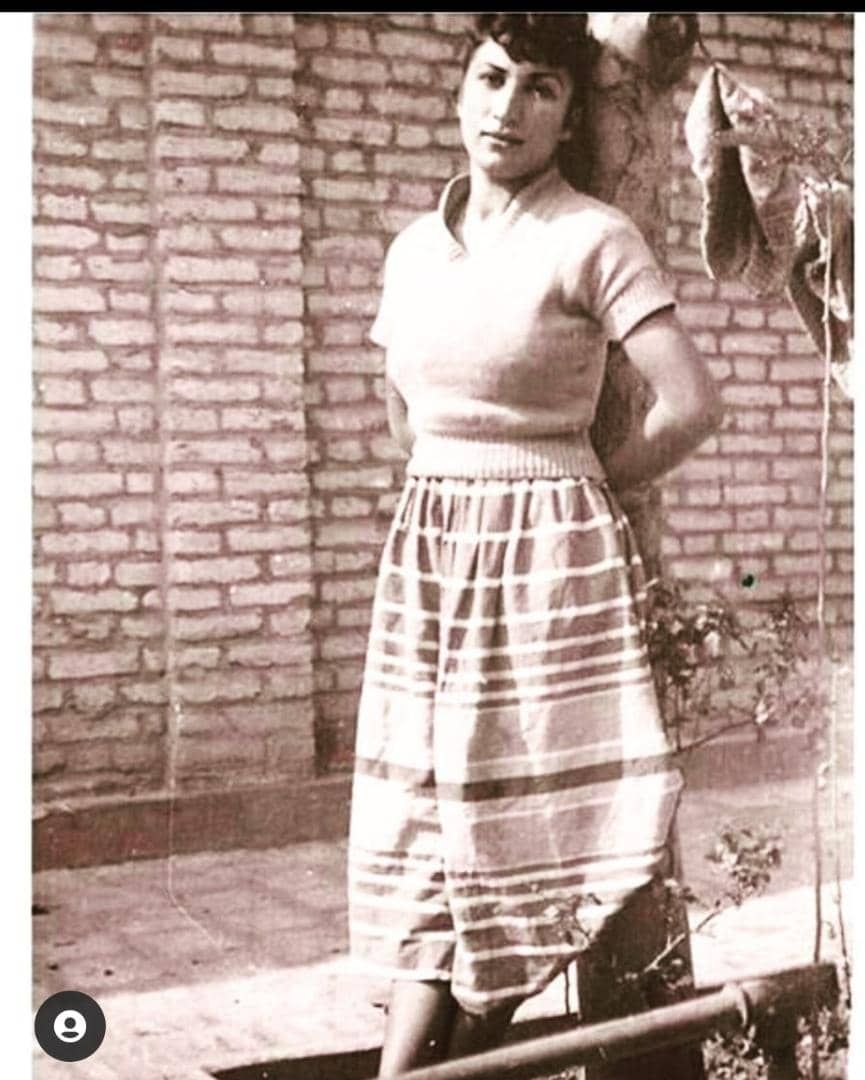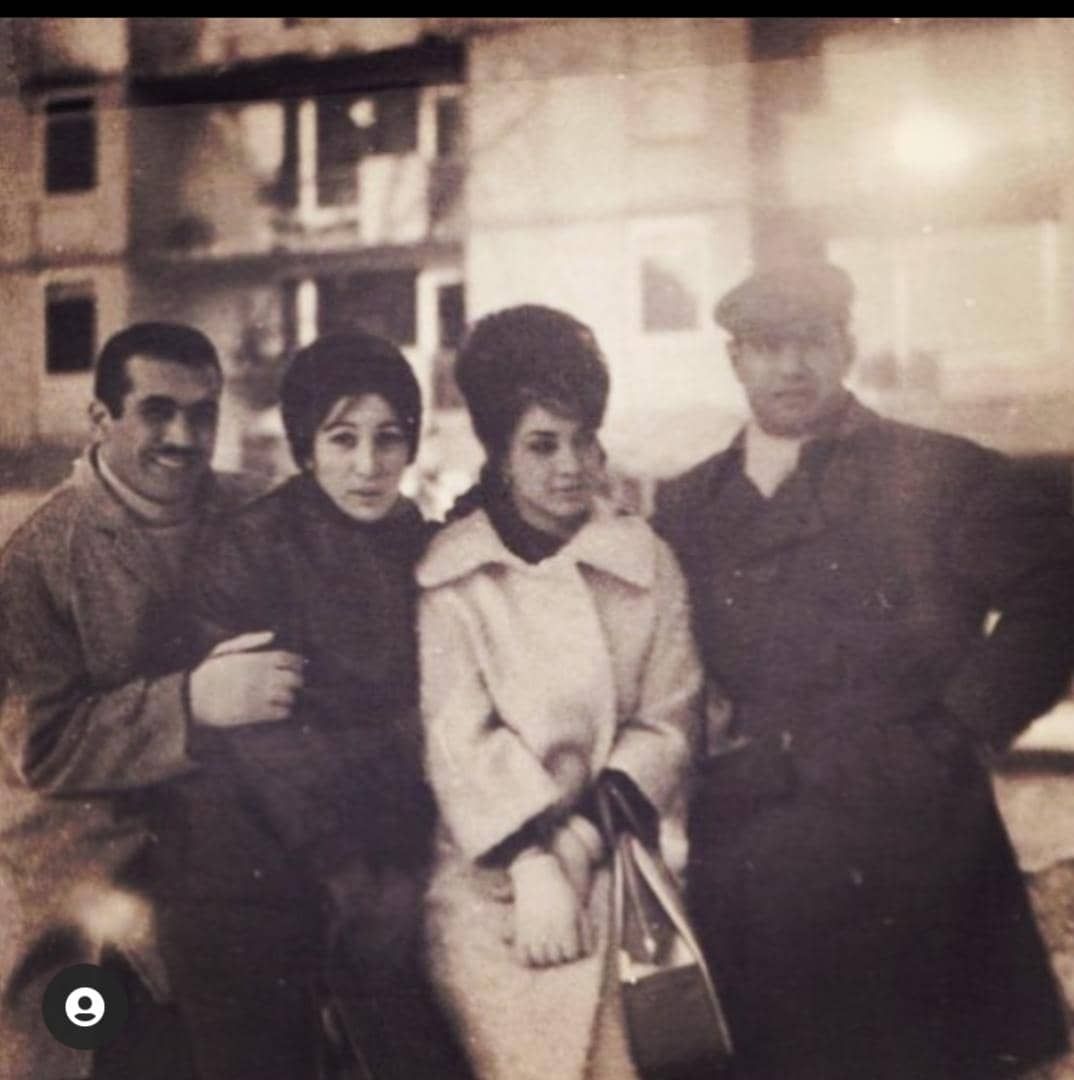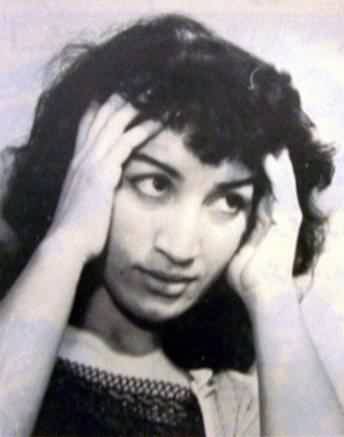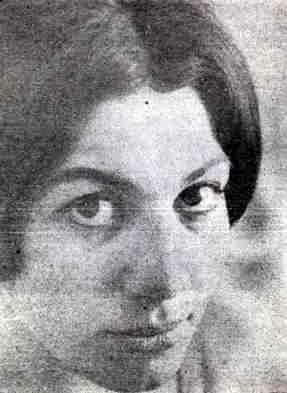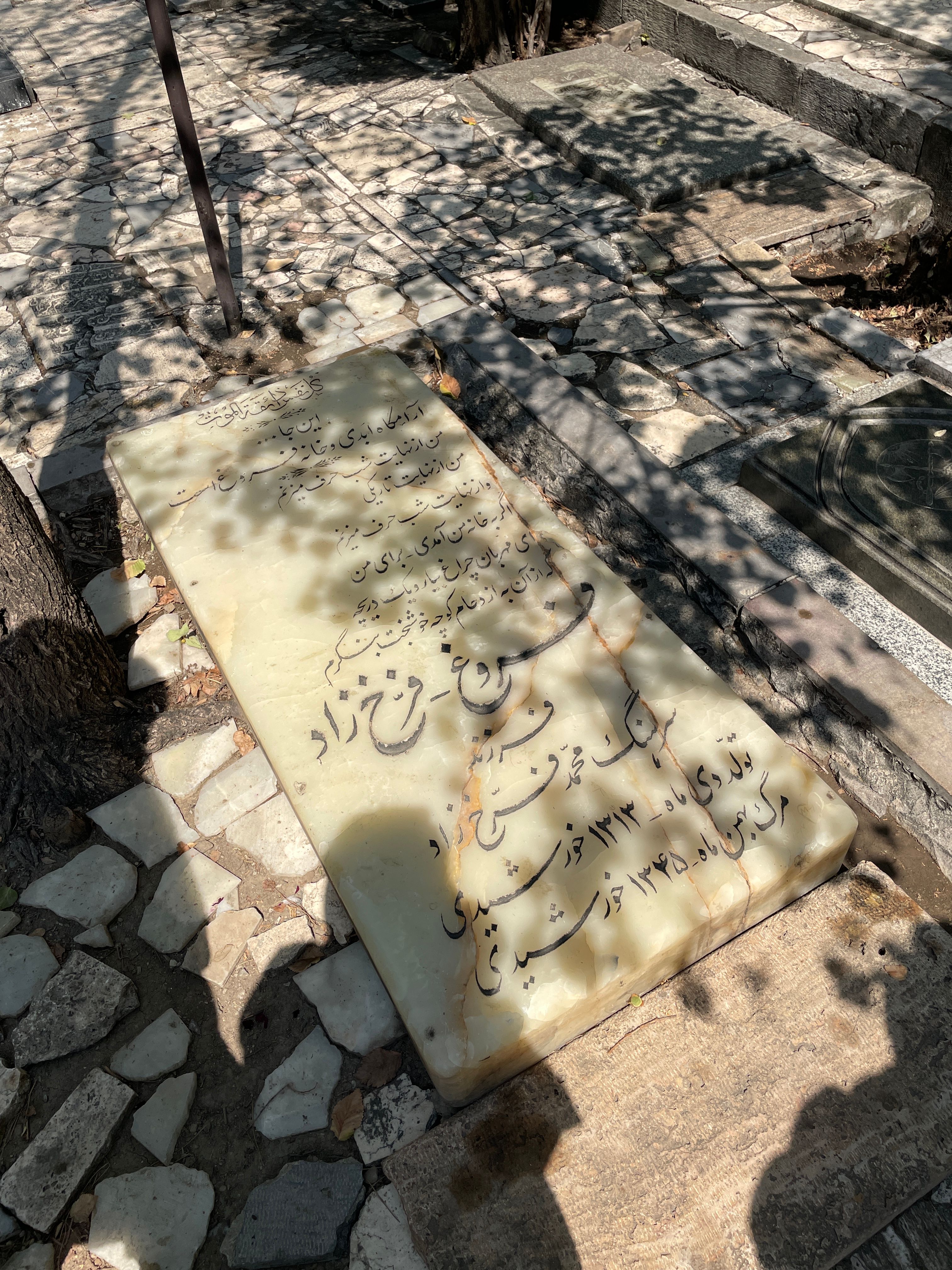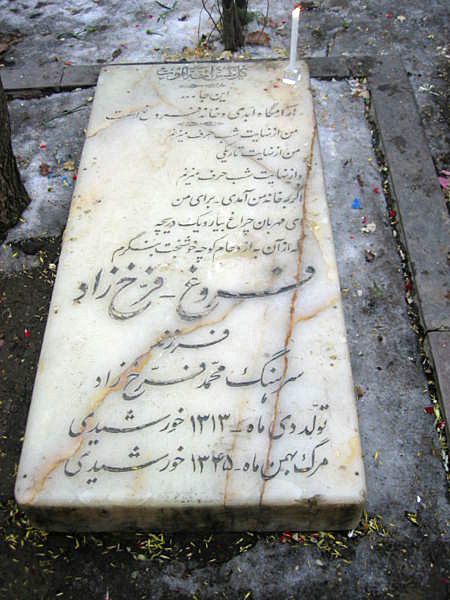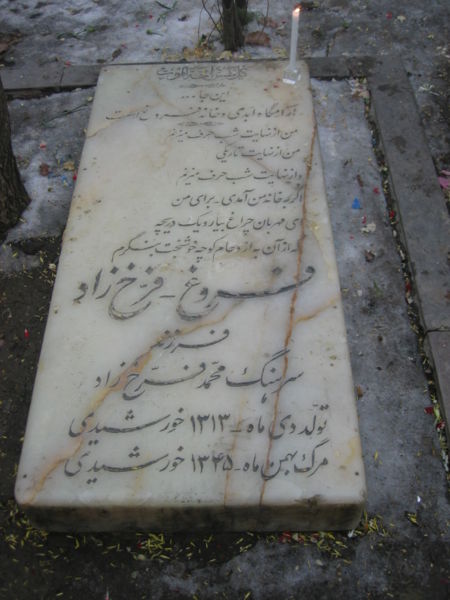An extremely small number of Iranian women have achieved anything in Iran outside of the home without dependence upon a relationship with a man or male patronage. The best known among them is the poet Forugh Farrokhzad (1935-1967), the most famous woman in the history of Persian literature.As a divorcee poet in Tehran, Farrokhzad attracted much attention and considerable disapproval. She had several short lived relationships with men-"The Sin" describes one of them,--, found some respite in a nine-month trip to Europe, and in 1958 met Ebrahim Golestan (b. 1922), a controversial film-maker and writer with whom she established a relationship that lasted until her death in an automobile accident at thirty-two years of age in February 1967.
Sound, sound, sound,
Only sound remains. (Forugh Farrokhzad)
U can check out about her at:http://www.forughfarrokhzad.com/lifetime.htm∼Forugh Farrokhzad
January 5, 1935 – February 13, 1967
Forugh Farrokhzad was an influential Iranian poet and film director. She was a controversial modernist poet and an iconoclast, writing from a female point of view.
Forugh (also spelled Forough) was born in Tehran to career military officer Colonel Mohammad Bagher Farrokhzad (originally from Tafresh city) and his wife Touran Vaziri-Tabar in 1935. The third of seven children (Amir, Massoud, Mehrdad, Fereydoun Farrokhzad, Pooran Farrokhzad, Gloria), she attended school until the ninth grade, then was taught painting and sewing at a girls' school for the manual arts.
At age sixteen she was married to Parviz Shapour, a satirist. Farrokhzad continued her education with classes in painting and sewing and moved with her husband to Ahvaz. A year later, she bore her only child, a son named Kamyar Shapour (subject of A Poem for You).
Within two years, in 1954, Farrokhzad and her husband divorced; Parviz won custody of the child. She moved back to Tehran to write poetry and published her first volume, entitled The Captive, in 1955.
Farrokhzad, a female divorcée writing controversial poetry with a strong feminine voice, became the focus of much negative attention and open disapproval. In 1958 she spent nine months in Europe. After returning to Iran, in search of a job she met film-maker and writer Ebrahim Golestan, who reinforced her own inclinations to express herself and live independently.
She published two more volumes, "The Wall" and "The Rebellion" before traveling to Tabriz to make a film about Iranians affected by leprosy. This 1962 documentary film titled "The House is Black" won several international awards. During the twelve days of shooting, she became attached to Hossein Mansouri, the child of two lepers. She adopted the boy and brought him to live at her mother's house.
In 1964 she published "Another Birth." Her poetry at that time varied significantly from previous Iranian poetic conventions.
On February 13, 1967, Farrokhzad died in a car accident at age thirty-two. In order to avoid hitting a school bus, she swerved her Jeep, which hit a stone wall; she died before reaching the hospital. Her poem "Let Us Believe" in the beginning of the cold season was published posthumously, and is considered by some to be one of the best-structured modern poems in Persian.
Farrokhzad's poetry was banned for more than a decade after the Islamic Revolution. A brief literary biography of Forough, Michael Hillmann's "A lonely Woman: Forough Farrokhzad and her poetry", was published in 1987.
Farzaneh Milani's work "Veils and Words: the emerging voices of Iranian women writers" (1992) included a chapter about her. Nasser Saffarian has directed three documentaries about her life: "The Mirror of the Soul" (2000), "The Green Cold" (2003), and "Summit of the Wave" (2004).
She is the sister of the singer, poet and political activist Fereydoon Farrokhzad.
Documentaries and other works:
I Shall Salute the Sun Once Again, English-language documentary about Forough Farrokhzad, by Mansooreh Saboori, Irandukht Productions 1998.
Moon Sun Flower Game, German Documentary about Forough Farrokhzad's adopted son Hossein Mansouri, by Claus Strigel, Denkmal-Film 2007.
The Bride of Acacias, a play about Forough Farrokhzad by Ezzat Goushegir
Article by Wikipedia, the free encyclopedia
https://en.wikipedia.org/wiki/Forough_Farrokhzad
An extremely small number of Iranian women have achieved anything in Iran outside of the home without dependence upon a relationship with a man or male patronage. The best known among them is the poet Forugh Farrokhzad (1935-1967), the most famous woman in the history of Persian literature.As a divorcee poet in Tehran, Farrokhzad attracted much attention and considerable disapproval. She had several short lived relationships with men-"The Sin" describes one of them,--, found some respite in a nine-month trip to Europe, and in 1958 met Ebrahim Golestan (b. 1922), a controversial film-maker and writer with whom she established a relationship that lasted until her death in an automobile accident at thirty-two years of age in February 1967.
Sound, sound, sound,
Only sound remains. (Forugh Farrokhzad)
U can check out about her at:http://www.forughfarrokhzad.com/lifetime.htm∼Forugh Farrokhzad
January 5, 1935 – February 13, 1967
Forugh Farrokhzad was an influential Iranian poet and film director. She was a controversial modernist poet and an iconoclast, writing from a female point of view.
Forugh (also spelled Forough) was born in Tehran to career military officer Colonel Mohammad Bagher Farrokhzad (originally from Tafresh city) and his wife Touran Vaziri-Tabar in 1935. The third of seven children (Amir, Massoud, Mehrdad, Fereydoun Farrokhzad, Pooran Farrokhzad, Gloria), she attended school until the ninth grade, then was taught painting and sewing at a girls' school for the manual arts.
At age sixteen she was married to Parviz Shapour, a satirist. Farrokhzad continued her education with classes in painting and sewing and moved with her husband to Ahvaz. A year later, she bore her only child, a son named Kamyar Shapour (subject of A Poem for You).
Within two years, in 1954, Farrokhzad and her husband divorced; Parviz won custody of the child. She moved back to Tehran to write poetry and published her first volume, entitled The Captive, in 1955.
Farrokhzad, a female divorcée writing controversial poetry with a strong feminine voice, became the focus of much negative attention and open disapproval. In 1958 she spent nine months in Europe. After returning to Iran, in search of a job she met film-maker and writer Ebrahim Golestan, who reinforced her own inclinations to express herself and live independently.
She published two more volumes, "The Wall" and "The Rebellion" before traveling to Tabriz to make a film about Iranians affected by leprosy. This 1962 documentary film titled "The House is Black" won several international awards. During the twelve days of shooting, she became attached to Hossein Mansouri, the child of two lepers. She adopted the boy and brought him to live at her mother's house.
In 1964 she published "Another Birth." Her poetry at that time varied significantly from previous Iranian poetic conventions.
On February 13, 1967, Farrokhzad died in a car accident at age thirty-two. In order to avoid hitting a school bus, she swerved her Jeep, which hit a stone wall; she died before reaching the hospital. Her poem "Let Us Believe" in the beginning of the cold season was published posthumously, and is considered by some to be one of the best-structured modern poems in Persian.
Farrokhzad's poetry was banned for more than a decade after the Islamic Revolution. A brief literary biography of Forough, Michael Hillmann's "A lonely Woman: Forough Farrokhzad and her poetry", was published in 1987.
Farzaneh Milani's work "Veils and Words: the emerging voices of Iranian women writers" (1992) included a chapter about her. Nasser Saffarian has directed three documentaries about her life: "The Mirror of the Soul" (2000), "The Green Cold" (2003), and "Summit of the Wave" (2004).
She is the sister of the singer, poet and political activist Fereydoon Farrokhzad.
Documentaries and other works:
I Shall Salute the Sun Once Again, English-language documentary about Forough Farrokhzad, by Mansooreh Saboori, Irandukht Productions 1998.
Moon Sun Flower Game, German Documentary about Forough Farrokhzad's adopted son Hossein Mansouri, by Claus Strigel, Denkmal-Film 2007.
The Bride of Acacias, a play about Forough Farrokhzad by Ezzat Goushegir
Article by Wikipedia, the free encyclopedia
https://en.wikipedia.org/wiki/Forough_Farrokhzad
Sponsored by Ancestry
Advertisement
Advertisement
